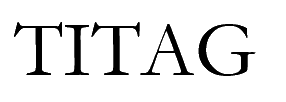|
Why Invertebrates?
Invertebrates, or “animals without backbones” account for the majority of life on Earth, with most estimates indicating that they alone comprise 95 to 99% of all animal species. Their diversity is staggering and their roles as pollinators and nutrient recyclers are unmatched in scope. Invertebrates occupy critical roles in food webs at many levels: as primary consumers, predators, prey, decomposers and pollinators—to name a few.
How is this connected to humans? Why should we care about invertebrate conservation? If we look at each of these roles individually, the answer will become apparent.
Primary consumers such as grasshoppers are the link in the ecosystem between plants (which harness the energy of the sun via photosynthesis) and animals, and they pass this energy on in the food web as they are consumed. Just as the foundation of a house is its stability, primary consumers are an irreplaceable part of the base of the food web. If the foundation is cracked or lost, the entire house collapses, and the same applies for the ecosystem if the primary consumers are lost. This is why the maintenance and preservation of even the smallest animals—invertebrates such as katydids, caterpillars, and stick insects---can be paramount to the success of the top carnivore in the same ecosystem!
Predators such as spiders, scorpions, and predaceous diving beetles provide an invaluable service by keeping populations of many different types of animals in check. In one famous attempt to prove it, a debate has raged over the years about the answer to the following question: (from M. Berenbaum, Buzzwords)
If all of the offspring of one housefly lived to reproduce, how many flies would there be at the end of one year?
The answer, remarkably, is that the flies would blanket an area roughly the size of Germany---47 feet deep! Perhaps now it is a little easier to understand the usefulness of a common cellar spider, which eats flies and other small invertebrates in great numbers.
The fact is that many invertebrates prey upon other invertebrates considered harmful to humans, agriculture and livestock. Dragonfly young feed on mosquito larvae, spiders snare biting flies and scorpions ambush roaches--- and the list goes on and on.
Invertebrates are prey items for countless vertebrate and invertebrate animals, from fish to frogs and birds to bears—even primates, including humans. Their relative abundance makes them a staple food item within many ecosystems, and they are also major and often rather expensive delicacies in many cultures. From crabs, lobsters, and shrimp to squid and octopus, and various caterpillars, termites, water bugs and beetle grubs, they are an excellent source of protein enjoyed worldwide by most animal groups.
Decomposers perform essential functions that return nutrients to the soil by breaking down organic matter such as decaying animals, feces, rotten wood and fruit, and leaf litter. A great number of invertebrate animals fall into this category: millipedes, beetles, termites, ants, isopods, earthworms, etc. Without their services, these organic burdens would go unprocessed, soils would become stagnant and nutrient-poor, and terrestrial habitats would suffocate.
Pollination is the domain of the invertebrate, with many species of flowering plants evolving in concert with the insect that pollinates it. Most fruits, nuts, and vegetables are dependent upon insect pollination for commercial reproduction, and most of the commercially-produced animal products eaten by humans are fed insect-pollinated foods such as alfalfa and clover. Estimates reveal that up to one third of our diet is dependent (directly or indirectly) on insect pollination. We all know that bees are significant pollinators, but wasps, flies, beetles and butterflies also fill this role.
Why invertebrates? Because all roads begin and end with their contributions, and life as we know it is due in large part to these unsung heroes. To summarize the importance of invertebrates to all life, Harvard entomologist E.O. Wilson said it best: (from E.O. Wilson, The Diversity of Life)
“If invertebrates were to disappear, it is unlikely that the human species could last more than a few months. Most of the fishes, amphibians, birds and mammals would crash to extinction around the same time. Next would go the bulk of the flowering plants and with them the physical structure of the majority of the forests and other terrestrial habitats of the world. The land surface would literally rot. Within a few decades the world would return to the state of a billion years ago, comprised primarily of bacteria, algae, and a few other very simple multicellular plants.”
The success and harmony of all animal species goes hand in hand with the survival of invertebrates, and TITAG strives to promote an awareness of this critically important relationship.
|
|



